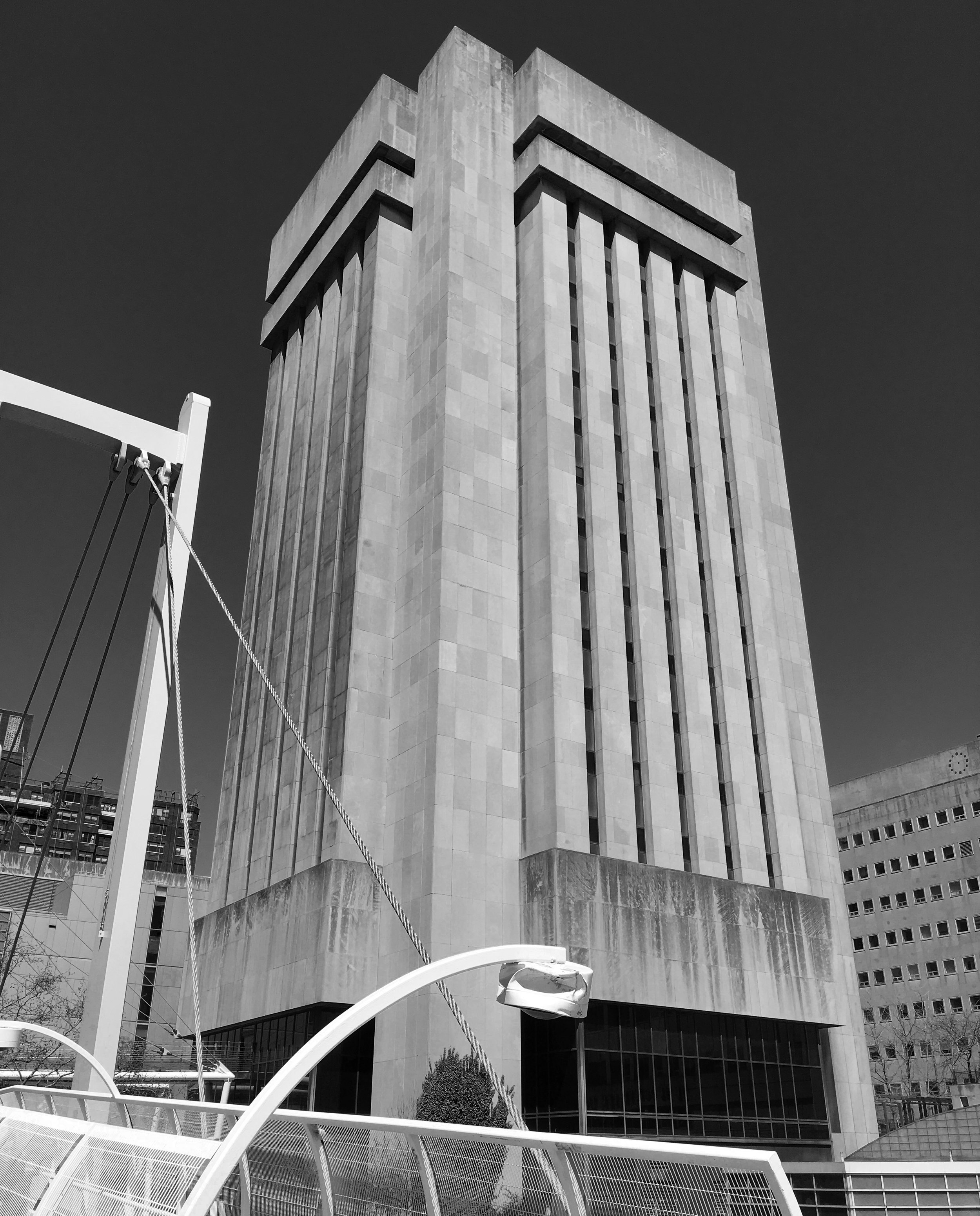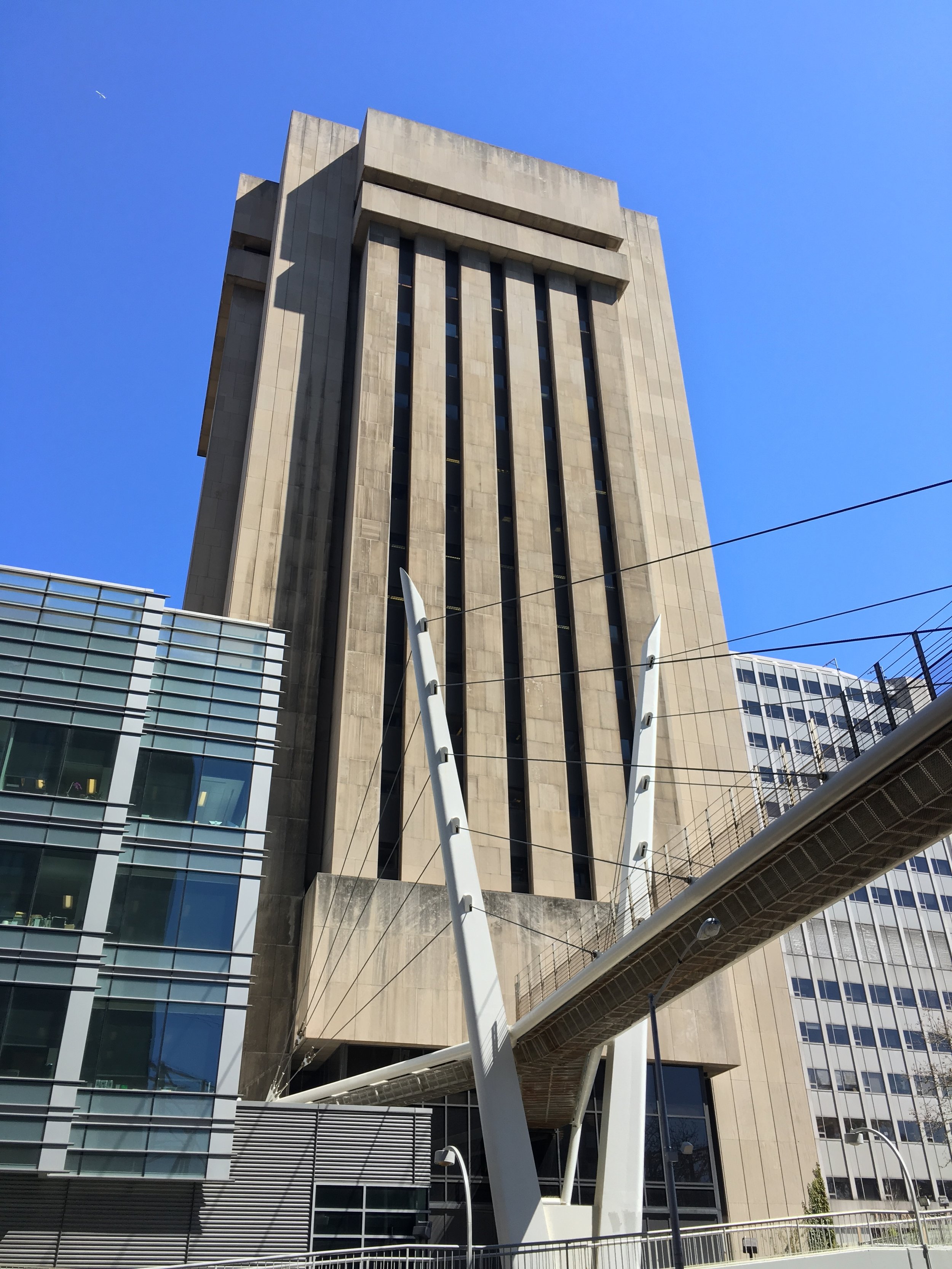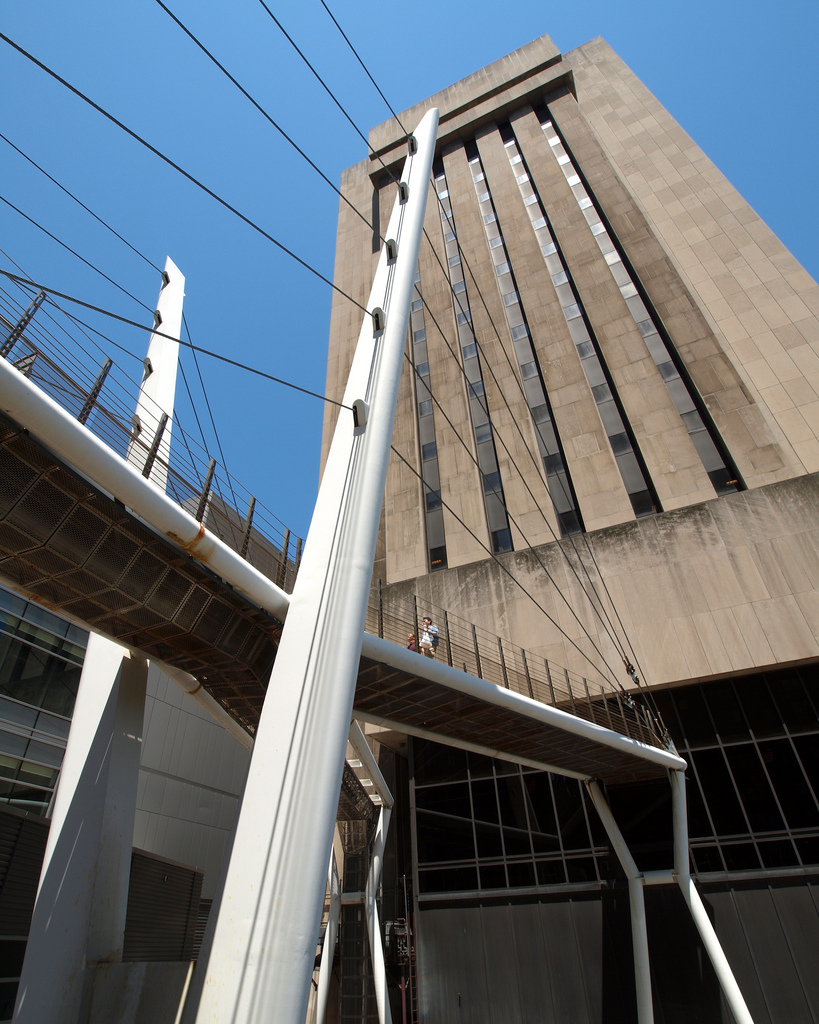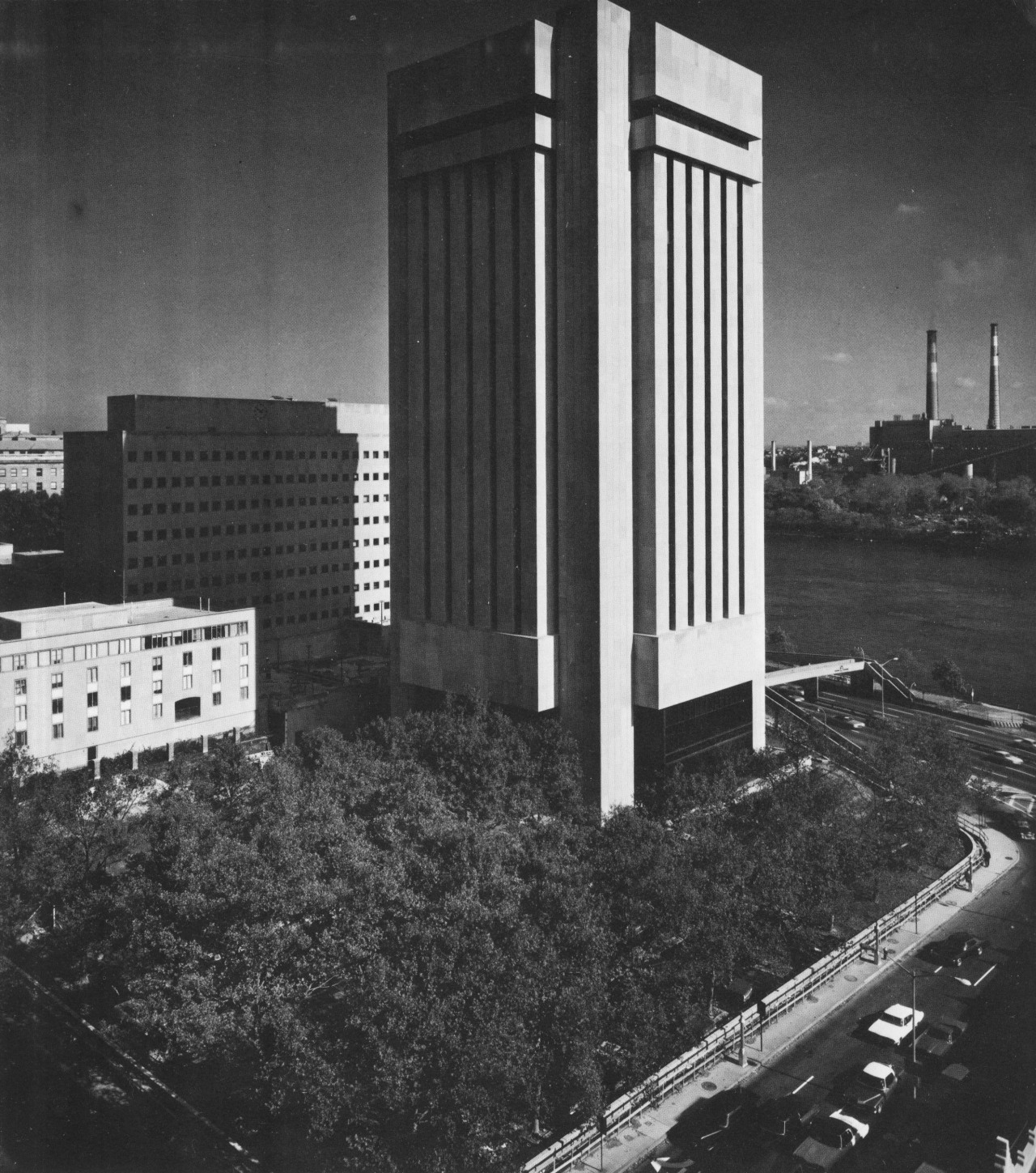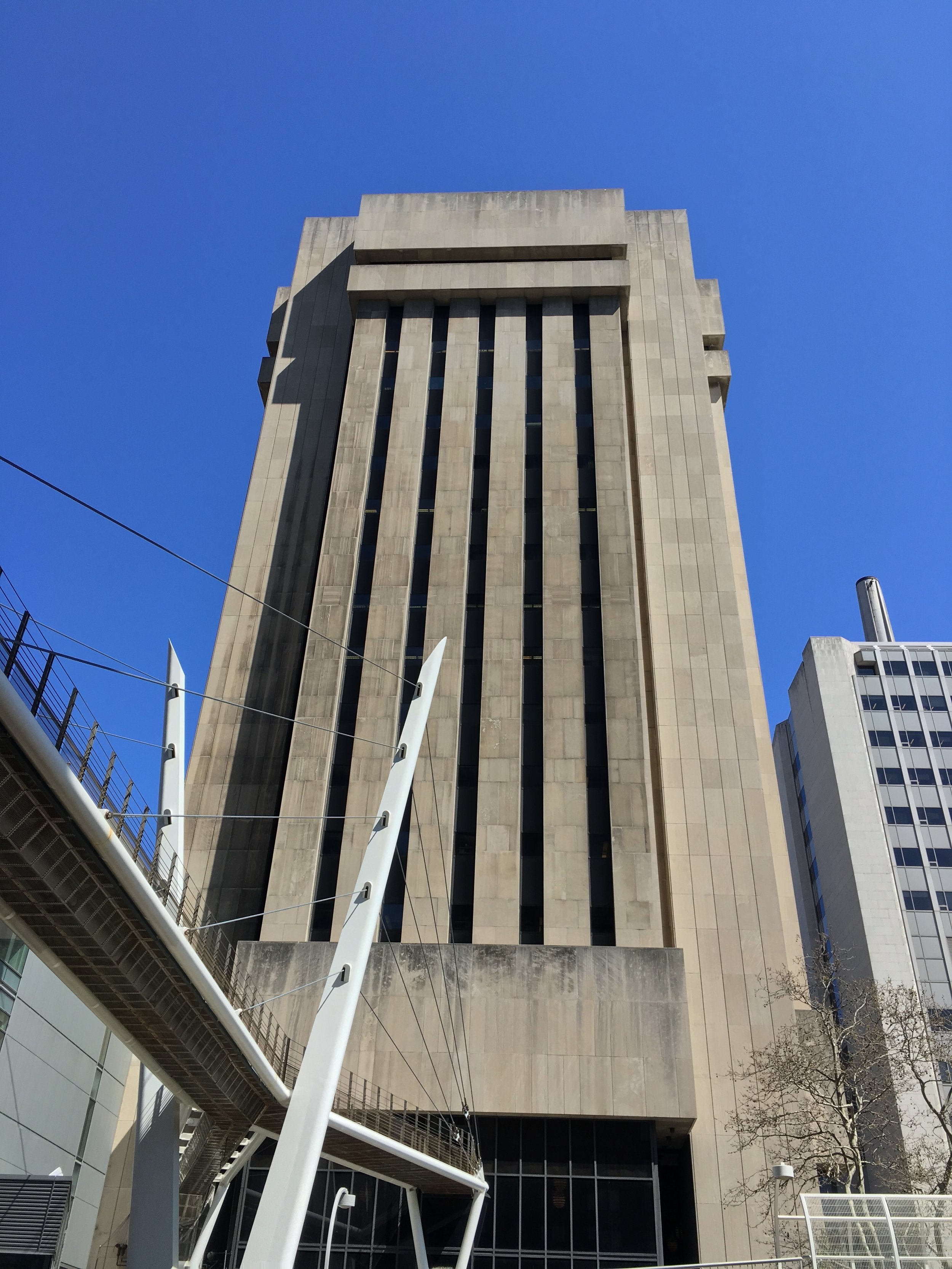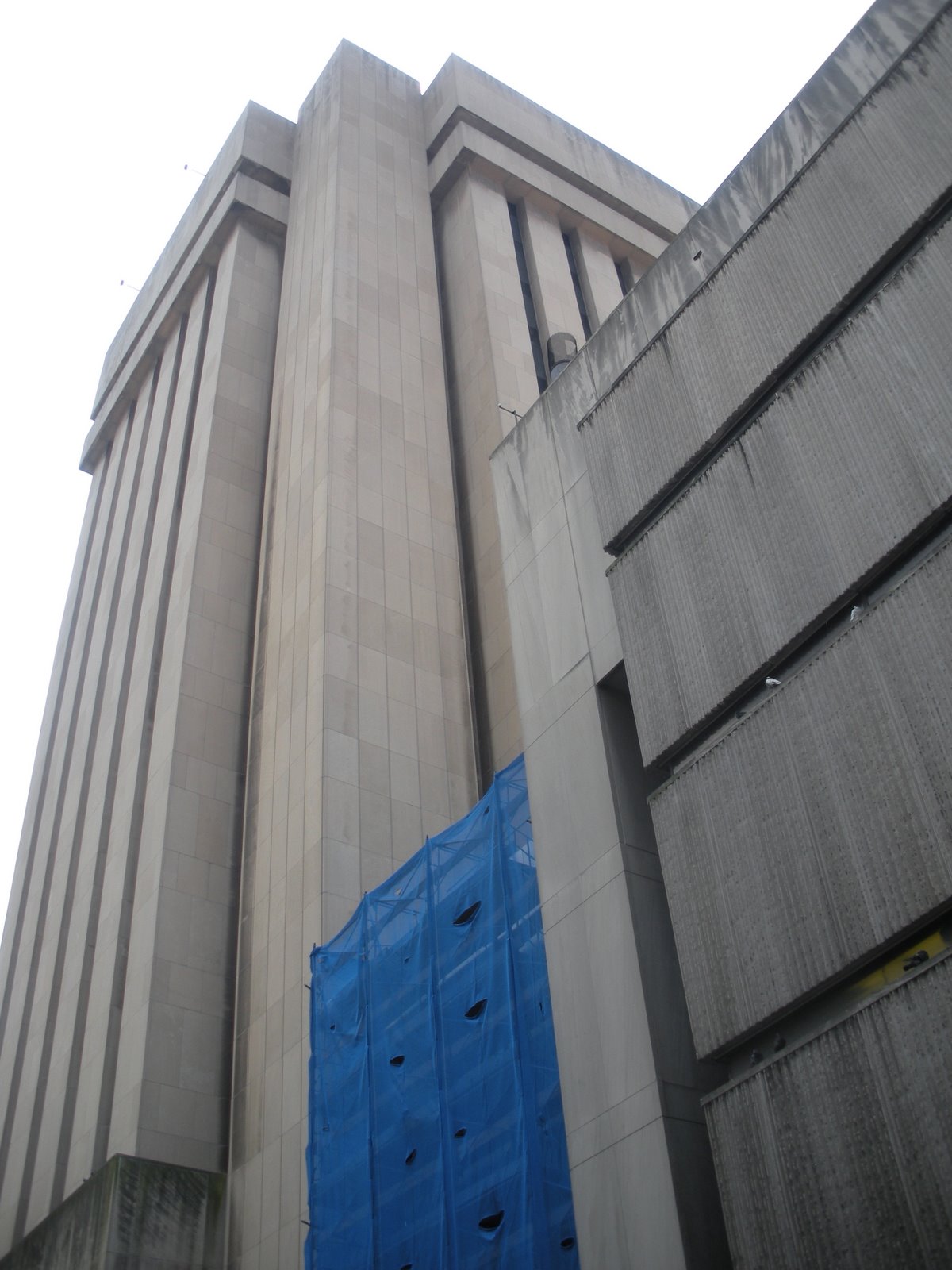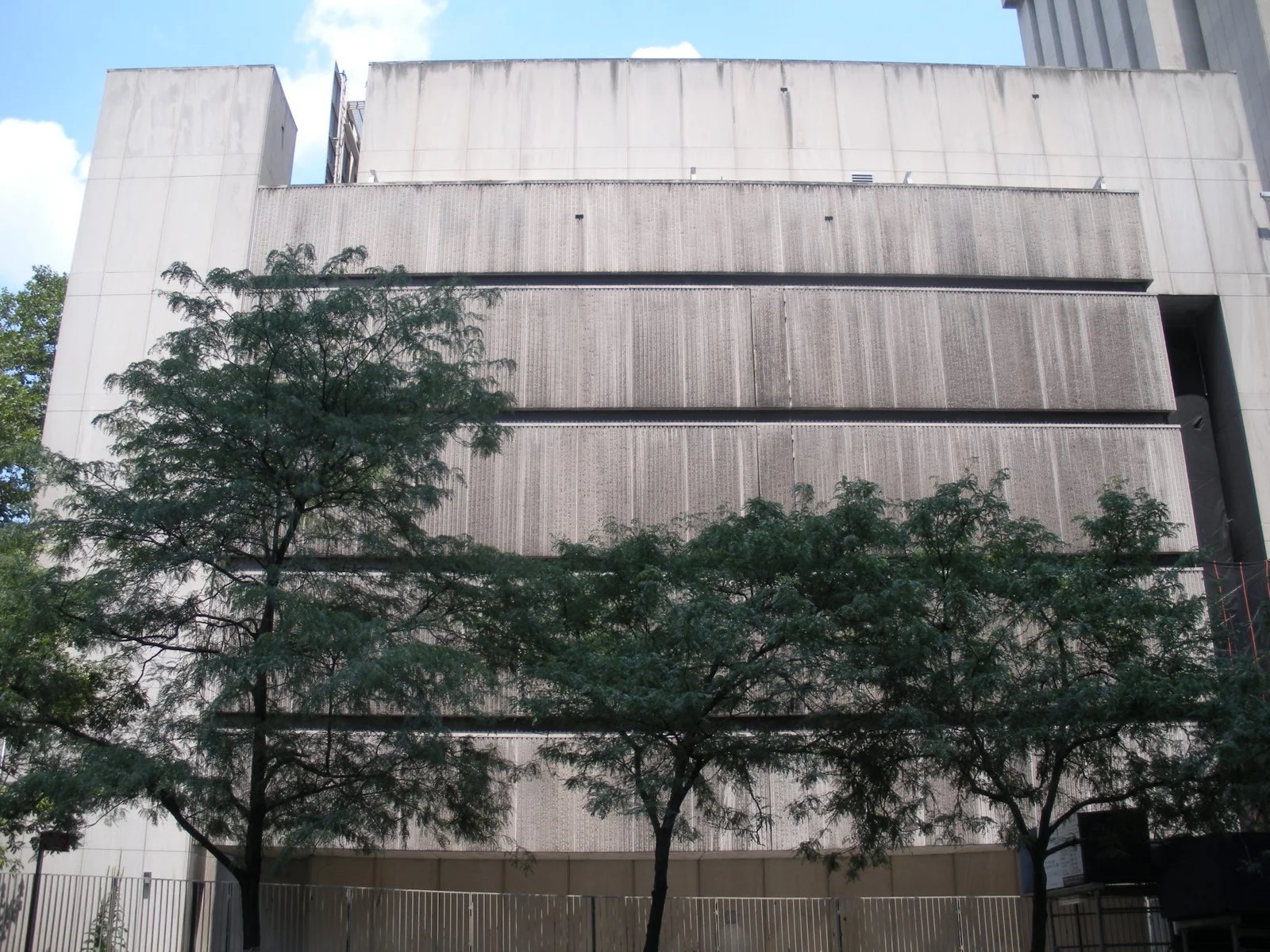WEISS SCIENCE TOWER
Weiss Science Tower from First Avenue. Credit: NYC Urbanism, 2016.
Weiss Science Tower
Date: 1971
Architect: Nelson W. Aldrich
Address: 1174-1268 York Avenue
Use: University
Weiss Science Tower from Queensborough Bridge
The Rockefeller Institute for Medical Research campus on the east side of Manhattan at York Avenue and 66th Streets was designed in 1906 – the first institution in the United States devoted solely to biomedical research. Renamed Rockefeller University in 1954, Wallace K. Harrison was chosen as the lead architect to redesign the campus in 1957. A close friend of the Rockefellers, Governor Rockefeller also chose Harrison to design the expansive brutalist Empire State Plaza at the capitol in Albany. Between York Avenue and the East River, Harrison designed a long landscaped promenade, walled off from the Avenue by two four-story buildings, with a dome-shaped auditorium at its south end. In 1963 construction of a new subway tunnel under the East River temporarily disrupted the progress of the campus, but Rockefeller announced in 1968 that it would construct a new tower at the southeast corner of the campus.
Comparative Bioscience Center at Rockefeller Universit. Credit: Ryan Witte, rwarchitextures.blogspot.com.
The seventeen-story Weiss Science Tower was designed by Nelson W. Aldrich, principal at Campbell Aldrich & Nulty and cousin to the Rockefellers. Campbell Aldrich & Nulty were no strangers to brutalism – they worked on the infamous Boston City Hall with Kallman, McKinnell & Wood and Aldrich studied at Harvard's Graduate School of Design in the 1930s under Gropius and Breuer and alongside a generation of American architects that would go on to define American modernism and brutalism.
The tower is simplistic in its design, with powerful corner piers that bookend distinctly classical facades. A light base of black glass rests under the heavy stone mass with narrow vertical windows recessed within limestone bands that run the majority of the building’s height, topping out with a weighty capital of limestone and glass. The whole composition, aside from the corner piers, recalls a geometricized classical column to an almost cartoonish extent. While Stern compares the tower to "a pale and clumsily detailed version of Philip Johnson’s Henry L. Moses Research Institute at Montefiore Hospital," we would argue it has more in common with Johnson’s Kline Biology Tower at Yale, in that it takes Mies van der Rohe’s Seagram Building as a precedent, extracts the classical essence of that landmark modernist tower, and applies a new stylist language to that essence. Whereas Johnson maintained the same column-like tripartite composition but replaced the slender I-Beams of Seagram with round, engaged columns and transposed the building into brick to match its New England context, Aldrich performed the same compositional operations and classical lineage but inverted the facade of the building, replacing the I-beam’s with sunken windows, inverting the relationship between glass and mass and turning the whole tower into a fluted column.
The massive tower was completed in 1974 and houses offices and laboratories. The other addition to the southern end of the campus, which somewhat compliments Weiss is the Raymond F. Stainback Comparative Bioscience Center, a bulky ribbed concrete building with ribbon windows, surrounded by windowless concrete piers on each corner. The Bioscience Center, built in 1975 and designed by Raymond F. Stainback, is linked to Weiss.
